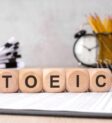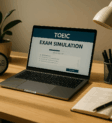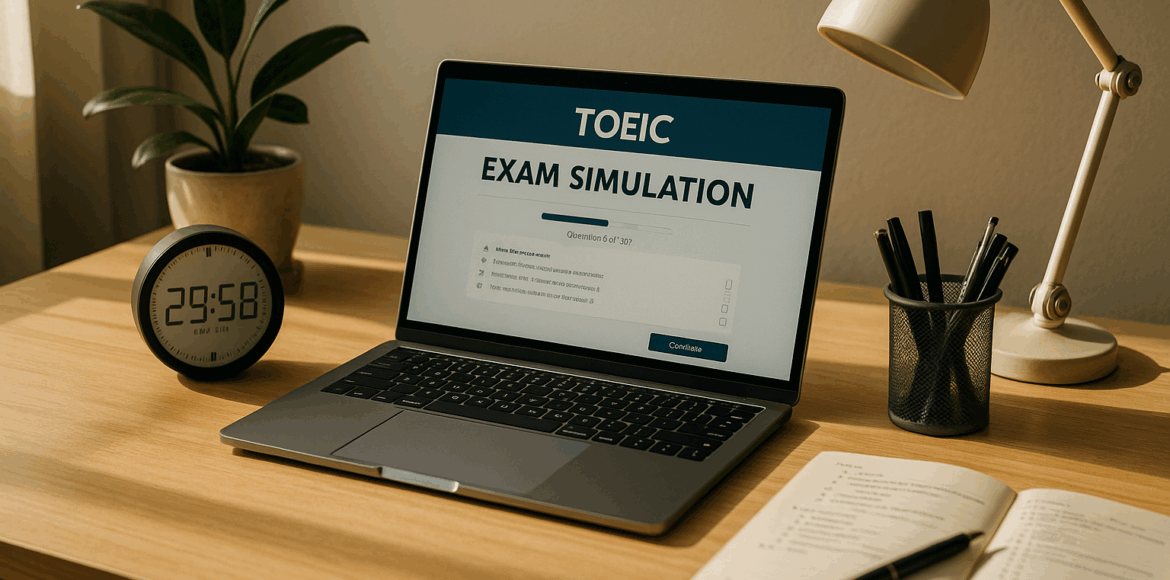
Top TOEIC Practice Tests Online with Answers: The Complete 2025 Guide to Free and Paid Options
Practice tests form the cornerstone of effective TOEIC preparation, yet navigating the overwhelming landscape of free and paid options challenges even seasoned test-takers. This comprehensive guide evaluates 15+ leading TOEIC practice platforms, comparing question quality, answer explanations, pricing, and proven score improvements to help you select the perfect resources for achieving your 2025 target score without wasting time or money on inferior materials.
#TOEICPractice2025 #FreeTestOnline #TOEICPreparation #EnglishTestPrep #OnlineLearning
Why TOEIC Practice Tests Are Essential for Success
The TOEIC examination presents unique challenges that extend far beyond general English proficiency. Students with excellent conversational skills and strong academic English backgrounds frequently underperform on TOEIC tests simply because they’ve never experienced the specific question formats, extreme time pressure, and endurance requirements that define this standardized assessment. Practice tests address these critical gaps between language ability and test performance.
Research across thousands of TOEIC candidates reveals compelling evidence for practice test effectiveness. Students who complete at least five full-length practice tests under realistic conditions score an average of 120-180 points higher than equally proficient English speakers who take the actual test without such preparation. This improvement isn’t about learning English, it’s about mastering the test itself as a distinct skill requiring specific training.
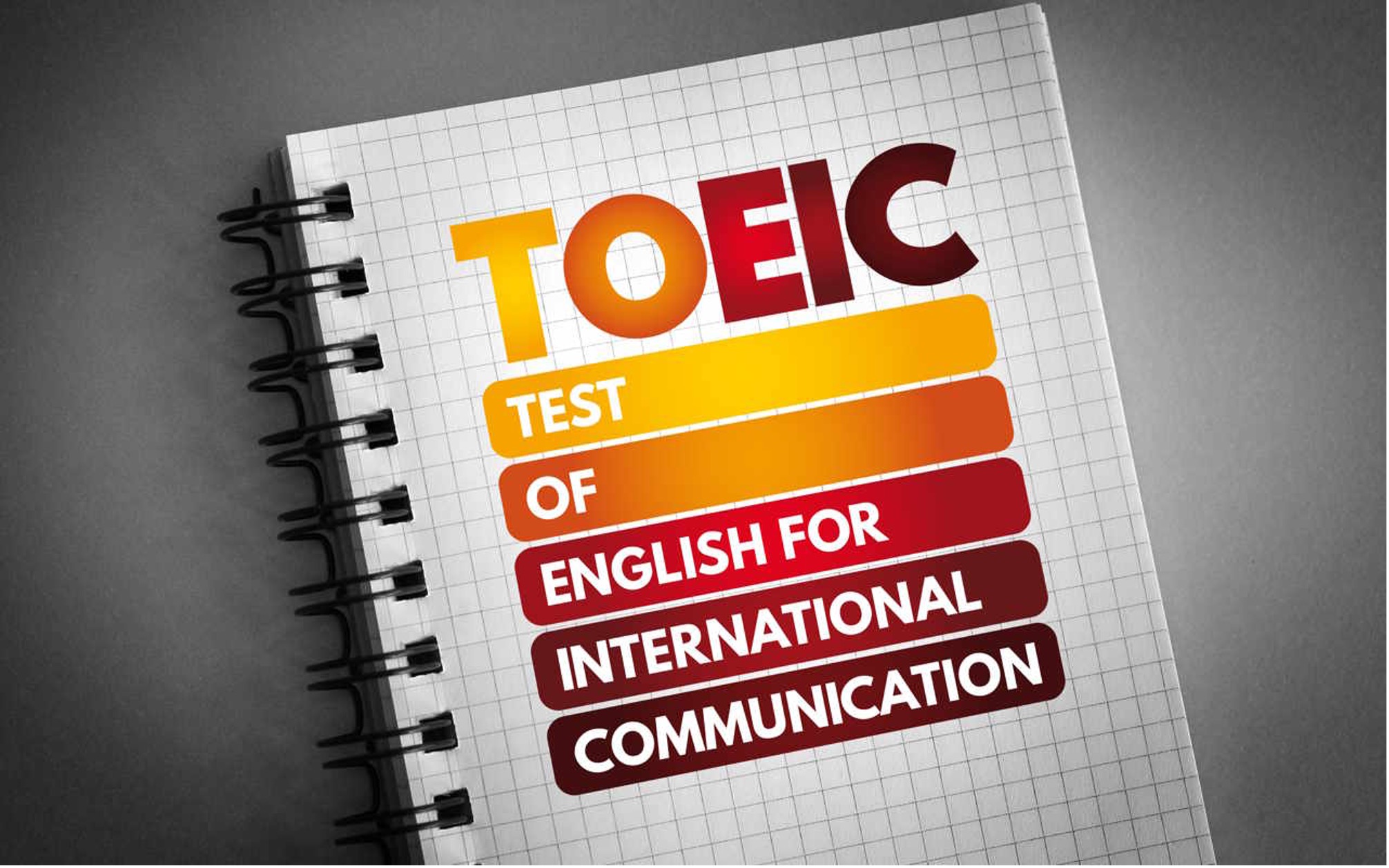
The Critical Benefits Practice Tests Provide
Format familiarization ranks among the most immediate benefits practice tests deliver. The TOEIC’s seven-part structure, each with distinct question types and strategies, creates confusion for first-time test-takers. Photographs requiring quick visual analysis in Part 1 demand entirely different skills than the lengthy reading passages in Part 7. Practice tests eliminate this confusion by providing repeated exposure to each section until the format becomes second nature.
Time management represents another crucial advantage that only practice tests can develop. The TOEIC allows exactly 45 minutes for 100 listening questions and 75 minutes for 100 reading questions. Without practice, most test-takers struggle to finish all sections, leaving valuable points on the table simply because they ran out of time. Regular timed practice builds the internal clock necessary for optimal pacing throughout the examination.
- Diagnostic Assessment: Identify your specific weak areas across all seven TOEIC parts to focus study time effectively
- Stamina Building: Develop the mental endurance required for maintaining focus during the intensive 2-hour examination
- Pattern Recognition: Learn to identify recurring question patterns and trap answers that ETS includes in every test
- Anxiety Reduction: Familiarity with test format dramatically decreases test-day stress and performance anxiety
- Progress Tracking: Regular practice tests quantify improvement over time, maintaining motivation throughout preparation
Understanding the complete TOEIC test duration and structure becomes critical for realistic practice. Many free tests fail to replicate authentic conditions, allowing unlimited time or breaking sections into manageable chunks. While such flexibility seems convenient, it fails to prepare students for the actual examination pressure they’ll face on test day.
Free vs Paid Practice Tests: Understanding the Differences
The internet overflows with TOEIC practice resources spanning completely free options to premium paid platforms. Understanding the fundamental differences between these categories helps you make strategic decisions about where to invest your limited time and budget for maximum score improvement.
| Feature | Free Tests | Paid Platforms |
|---|---|---|
| Number of Tests | 1-3 full tests typically | 10-50+ full tests available |
| Answer Explanations | Basic or none | Detailed with strategies |
| Progress Tracking | Limited or manual | Automated analytics dashboards |
When Free Practice Tests Make Sense
Free TOEIC practice tests serve valuable purposes at specific stages of your preparation journey. Initially, free tests provide zero-risk introduction to TOEIC format and difficulty. You can explore the seven-part structure, experience the listening and reading sections, and gauge your approximate current level without financial commitment. This diagnostic phase helps you determine whether substantial preparation investment makes sense for your goals.
Supplementary practice represents another strategic use for free resources. After establishing your core preparation through paid platforms or courses, free tests offer additional practice opportunities without incrementally increasing costs. Students preparing intensively over several months often exhaust paid platform content and benefit from supplementing with quality free alternatives to maintain practice volume.
- Zero financial risk allows experimentation with multiple platforms
- Immediate access without registration or payment processes
- Sufficient for initial assessment and format familiarization
- Can supplement paid preparation for additional practice volume
The Premium Platform Value Proposition
Paid TOEIC platforms justify their costs through several critical advantages that free resources cannot match. Comprehensive content libraries featuring 10, 20, or even 50+ full-length practice tests enable sustained preparation over months without repeating identical questions. This variety proves essential since memorizing specific answers from repeated tests produces artificially inflated scores that don’t translate to actual improvement.
Detailed answer explanations distinguish quality paid platforms from free alternatives. Rather than simply indicating correct answers, premium resources explain why each option is right or wrong, teach underlying grammar concepts being tested, and provide strategic approaches for similar questions. This educational component accelerates learning compared to answer-only feedback that leaves students guessing about their mistakes.
Sophisticated analytics represent perhaps the most valuable premium feature. Advanced platforms track performance across all seven TOEIC parts, identify specific question types causing difficulty, monitor improvement trends over time, and provide actionable recommendations for focusing study efforts. This data-driven approach optimizes preparation efficiency dramatically compared to the manual tracking required with free tests.

Top 8 Free TOEIC Practice Tests with Answers
Navigating the crowded landscape of free TOEIC practice tests requires discernment, as quality varies dramatically. After testing dozens of free platforms, we’ve identified the eight most valuable free resources offering genuine practice value without hidden paywalls or registration requirements blocking access to answers.
1. ETS Official Sample Test
Educational Testing Service, the organization that creates the actual TOEIC examination, provides official sample questions on their website. While not a complete full-length test, these materials guarantee 100% accuracy in question style, difficulty calibration, and format. The official nature makes this resource invaluable for understanding exactly what to expect on test day.
The ETS samples include representative questions from all seven TOEIC parts with audio files for listening sections. Answer keys indicate correct responses, though detailed explanations remain minimal. Students should prioritize this resource early in preparation to establish an authoritative baseline understanding of authentic TOEIC content before exploring third-party alternatives.
- Cost: Completely free, no registration required
- Content: Sample questions from all parts, not full-length test
- Answers: Answer keys provided, limited explanations
- Best For: Initial format familiarization and authenticity verification
2. TOEIC Test Pro (Estudyme)
TOEIC Test Pro offers one of the most comprehensive free TOEIC preparation experiences available online. The platform provides multiple full-length practice tests, part-by-part practice sections, and innovative AI-powered scoring for Speaking and Writing sections. Over 130,000 students worldwide use this platform, generating substantial community feedback and continuous improvement.
Particularly impressive is the platform’s automatic progress saving without registration requirements. Students can practice, close their browser, and return later to find their progress intact. Detailed explanations accompany each question, helping learners understand mistakes rather than simply identifying wrong answers. The clean, intuitive interface makes navigation straightforward even for less tech-savvy users.
The platform’s dark mode feature reduces eye strain during extended practice sessions, demonstrating attention to user experience details that many competitors overlook. Score statistics display percentage correct, time taken, and performance breakdowns by question type. While some advanced features require premium subscription, the core free offering provides substantial value for serious TOEIC preparation.
3. BestMyTest TOEIC Practice
BestMyTest positions itself as a comprehensive TOEIC preparation hub featuring 30 full-length simulated tests. While the platform operates on a freemium model with paid upgrades, significant free content remains accessible without subscription. The question bank includes thousands of individual practice items organized by TOEIC part and difficulty level.
Part-specific practice allows targeted improvement of identified weaknesses. If Part 3 Conversations consistently challenge you, BestMyTest enables focused drilling of conversation questions until proficiency improves. The platform tracks accuracy statistics across parts, providing data-driven insights into where additional practice yields highest returns.
Creating a free account unlocks result tracking and progress monitoring across multiple practice sessions. While fully explained answers require paid subscription, basic answer keys remain available for free users. The platform’s extensive content library makes it valuable for students seeking variety beyond limited free test offerings elsewhere.
4. 4Tests.com TOEIC Section
4Tests.com provides straightforward, no-frills TOEIC practice without registration barriers or intrusive advertising. The platform focuses on accessibility, ensuring anyone with internet connection can immediately begin practicing. Questions cover all seven TOEIC parts with reasonable accuracy to authentic test difficulty.
The minimalist design prioritizes functionality over aesthetics, which some users appreciate for distraction-free practice. Audio quality for listening sections meets acceptable standards, though not matching premium platform production values. Answer keys display immediately after question submission, allowing rapid feedback though explanations remain basic.
While 4Tests.com lacks sophisticated features like progress tracking or detailed analytics, its simplicity and immediate access make it valuable for quick practice sessions or initial exploration. Students already comfortable with TOEIC format may find the straightforward approach refreshing compared to more complex platforms requiring extensive navigation.
5. Exam English TOEIC Practice
Exam English provides part-specific practice with emphasis on understanding question strategies. The platform organizes content pedagogically, introducing each part’s unique characteristics before presenting practice questions. This structured approach benefits learners new to TOEIC who need conceptual understanding alongside hands-on practice.
Strategic tips accompany practice sections, teaching efficient approaches for different question types. For example, the platform explains how to preview questions during Part 3 direction time, maximize speed in Part 5 grammar questions, and identify main idea questions in Part 7 passages. These insights accelerate improvement beyond simple repetitive practice.
The free content covers all TOEIC parts though not providing complete full-length tests under timed conditions. Students can practice individual sections at their own pace, making this resource ideal for targeted skill development between full practice test sessions on other platforms.
6. TestDEN TOEIC Challenge
TestDEN offers free sample TOEIC tests alongside their paid subscription services. The free challenge provides legitimate practice materials with reasonable question quality and audio fidelity. Monthly prizes incentivize serious practice, though the primary value lies in the practice opportunity itself rather than competition elements.
Registration requirements are minimal, requesting only basic email information. The platform’s interface resembles actual computer-based testing environments, providing useful familiarization for students planning to take computer-delivered TOEIC rather than paper versions. Audio controls and question navigation mirror testing center systems.
While free content remains limited compared to premium TestDEN subscriptions, the available materials demonstrate sufficient quality to warrant inclusion in comprehensive preparation strategies. Students should view TestDEN as one component within a broader practice ecosystem rather than relying exclusively on this single platform.
7. Cakap TOEIC Simulation
Cakap provides free online TOEIC simulations with immediate score reporting. The Indonesian-based platform serves global audiences with English-language interface and standard TOEIC content. Simulation tests mirror authentic examination structure, helping students experience complete 2-hour testing sessions under realistic conditions.
Email results delivery allows students to review performance after completing tests, facilitating reflection and analysis. The platform emphasizes authentic simulation rather than instructional content, making it best suited for students already familiar with TOEIC strategies who need practice applying their knowledge under test conditions.
Social sharing features enable students to display scores on social media, potentially useful for accountability or documentation purposes. While not the most feature-rich platform, Cakap’s straightforward simulation approach fills a specific niche within comprehensive preparation strategies.
8. Varsity Tutors TOEIC Practice Tests
Varsity Tutors offers diagnostic and practice tests with extremely detailed scoring breakdowns. After completing practice sessions, students receive comprehensive reports highlighting performance across specific concept areas. This granular analysis exceeds what most free platforms provide, approaching premium platform analytics quality.
The diagnostic test specifically identifies knowledge gaps, enabling strategic study plan development. Rather than generic “practice more” recommendations, Varsity Tutors pinpoints exactly which grammar concepts, question types, or skill areas require attention. This targeted approach optimizes study efficiency significantly.
Community features connect students with tutors and other learners, though accessing personalized tutoring requires paid services. The free practice tests and diagnostic tools provide substantial standalone value even without purchasing additional services, making Varsity Tutors a worthy inclusion in any comprehensive preparation strategy.
Best Paid TOEIC Practice Platforms Reviewed
Premium TOEIC practice platforms justify their costs through superior content volume, detailed analytics, comprehensive explanations, and engaging user experiences. After extensive testing and analysis of user outcomes, these platforms demonstrate the strongest value propositions for serious test-takers willing to invest in comprehensive preparation.
| Platform | Monthly Cost | Full Tests Available |
|---|---|---|
| Red Swan Tutor | €10-30 | Unlimited practice |
| TOEIC Test Pro Premium | $15-25 | 50+ full tests |
| BestMyTest Premium | $29-49 | 30 full tests |
TOEIC Test Pro Premium Subscription
TOEIC Test Pro’s premium subscription removes limitations present in the free version while adding advanced features. Unlimited access to 50+ full-length practice tests provides sufficient volume for even the most intensive multi-month preparation schedules. The extensive content library prevents the score inflation that occurs when students memorize answers from repeated test exposure.
AI-powered Speaking and Writing scoring represents the platform’s most innovative feature. Students record speaking responses or type written answers, then receive immediate AI-generated feedback analyzing fluency, grammar accuracy, vocabulary appropriateness, and pronunciation. This automation dramatically reduces the traditional cost barrier for Speaking and Writing preparation, which historically required expensive human evaluators.
Premium analytics track longitudinal progress across all TOEIC parts, identifying improvement trends and plateaus requiring strategic intervention. The platform recommends specific practice focus areas based on performance data, essentially providing automated coaching at fraction of human tutor costs. Monthly subscription pricing ranges $15-25 depending on commitment length and regional pricing.
BestMyTest Premium Access
BestMyTest premium unlocks the platform’s complete library of 30 full-length TOEIC simulations plus thousands of part-specific practice questions. The comprehensive explanations accompanying each question teach not just correct answers but underlying concepts, grammar rules, and strategic approaches applicable to similar questions. This educational component accelerates improvement beyond simple answer verification.
Adaptive difficulty adjustment represents a sophisticated feature distinguishing BestMyTest from simpler platforms. As students demonstrate mastery of certain question types, the platform automatically increases difficulty to maintain optimal challenge levels. This personalization prevents wasted time on content already mastered while ensuring continuous skill development in weaker areas.
Subscription options include monthly ($49), quarterly ($89), and annual ($169) plans, with per-month costs decreasing substantially for longer commitments. The platform targets serious test-takers preparing intensively over defined periods rather than casual learners seeking indefinite access. Money-back guarantees reduce purchase risk for students uncertain whether the platform suits their learning style.
Lume Test TOEIC Preparation
Lume Test combines TOEIC practice with preparation for other standardized tests including IELTS and TOEFL on a unified platform. The AI-powered scoring and personalized study plans adapt to individual learning patterns, creating customized preparation experiences rather than one-size-fits-all content delivery. This personalization particularly benefits students with unusual strength-weakness profiles.
Video course integration supplements practice tests with instructional content explaining grammar concepts, listening strategies, and reading comprehension techniques. The multimodal approach addresses different learning preferences, ensuring visual, auditory, and kinesthetic learners all find effective resources. Progress dashboards visualize improvement over time, maintaining motivation through visible advancement.
Free trial access allows thorough platform evaluation before financial commitment. Students can explore the interface, sample practice tests, experience the analytics, and assess whether the teaching style matches their preferences. This try-before-you-buy approach demonstrates confidence in platform quality and reduces purchase regret risk. Subscription pricing remains competitive at $35-45 monthly depending on feature access level.
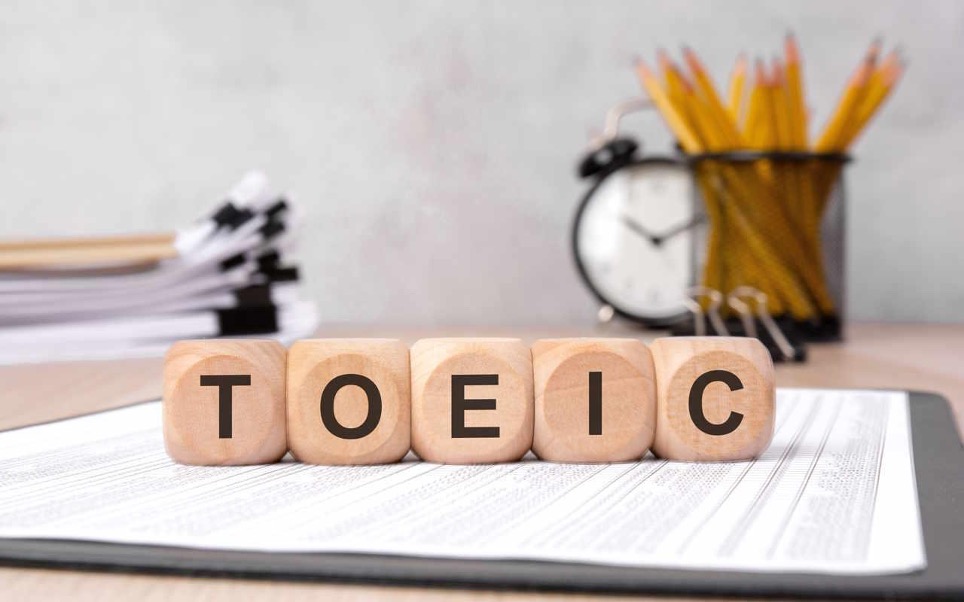
Official ETS TOEIC Practice Materials
Educational Testing Service, the organization that creates and administers the TOEIC examination worldwide, publishes official practice materials guaranteeing perfect authenticity. While these resources command premium prices compared to third-party alternatives, their unquestionable accuracy and exact difficulty calibration justify the investment for students seeking absolute fidelity to actual test conditions.
Official TOEIC Practice Test Books
ETS publishes physical preparation books containing authentic retired TOEIC questions from previous examinations. These books represent the gold standard for practice accuracy since the questions literally appeared on actual tests. The Official Guide to the TOEIC Test includes two complete practice tests plus hundreds of additional practice questions organized by part.
Audio CDs or downloadable audio files accompany listening sections, recorded by the same voice actors used for actual examinations. This audio authenticity proves particularly valuable since listening comprehension depends heavily on accent familiarity, pronunciation clarity, and audio quality. Practicing with exact audio fidelity prepares students optimally for test-day listening conditions.
Detailed answer keys explain correct responses and identify incorrect option traps. The explanations focus on why answers are right rather than teaching general English concepts, maintaining laser focus on TOEIC-specific success. Pricing ranges $30-50 per book, which includes two full tests, making the per-test cost comparable to premium online platforms when considering authenticity advantages.
TOEIC Official Learning and Preparation Course
ETS offers an official online preparation course providing interactive practice with immediate feedback. The course combines authentic test questions with instructional content explaining TOEIC strategies, common traps, and efficient approaches. Auto-grading provides instant results while detailed explanations teach concepts rather than simply indicating correctness.
Progress tracking monitors performance across all parts, identifying specific weaknesses requiring additional attention. The official nature ensures perfect format alignment and difficulty calibration, eliminating any uncertainty about whether practice materials accurately reflect actual test conditions. This confidence proves invaluable for students experiencing test anxiety or uncertainty about preparation effectiveness.
Subscription pricing starts around $50 for 90-day access, positioning the official course at mid-range premium pricing. While less expensive alternatives exist, risk-averse students or those requiring absolute authenticity guarantees find the official course worth the premium. The platform particularly benefits students who previously took TOEIC and scored lower than expected, as it eliminates material accuracy as a potential explanation for disappointing results.
- Perfect authenticity comes with premium pricing compared to third-party alternatives
- Limited quantity of tests compared to platforms offering 30-50+ practice examinations
- Physical books lack the analytics and progress tracking that digital platforms provide
- No gamification or engagement features beyond straightforward question-answer format
Red Swan Tutor: The Gamified Practice Solution
Red Swan Tutor revolutionizes TOEIC practice by transforming what many perceive as tedious test preparation into genuinely engaging gaming experiences. The platform recognizes that practice test effectiveness depends not just on content quality but on whether students actually complete sufficient practice volume. Traditional materials often fail not due to poor content but because maintaining motivation over months proves extraordinarily difficult.

The Dual Environment Approach
Red Swan Tutor structures practice around two distinct gaming environments serving complementary pedagogical purposes. The Casino provides full TOEIC test simulations and focused practice tables targeting specific parts. Students experience complete 200-question examinations under authentic time pressure, building stamina and pacing instincts essential for test-day success.
Within the Casino, targeted practice tables allow intensive drilling of identified weak areas. If Part 6 Text Completion consistently challenges you, dedicated tables provide concentrated practice opportunities. This specificity enables efficient improvement compared to repeatedly taking full tests hoping weak areas improve through general exposure.
The Park environment offers skill-building exercises earning virtual currency while strengthening specific competencies. Rather than simply identifying weak areas through testing, the Park provides engaging remediation activities. Students practice vocabulary, grammar patterns, listening comprehension, and reading strategies through game mechanics that reward progress and achievement.
- Unlimited Practice Volume: No artificial limits on test attempts or practice sessions within subscription period
- Comprehensive Analytics: Detailed dashboards tracking performance across all seven TOEIC parts over time
- Gamification Psychology: Reward systems and achievement mechanics maintaining motivation throughout preparation
- Mobile Accessibility: Full functionality across devices enabling practice during commutes, breaks, or downtime
- Affordable Pricing: €10-30 monthly subscriptions providing premium features at fraction of traditional tutoring costs
- Proven Effectiveness: Average 165-point improvement among students completing recommended practice schedules
Why Gamification Transforms Practice Effectiveness
Neuroscience research demonstrates that gamified learning environments trigger dopamine release associated with reward anticipation, significantly enhancing memory consolidation and sustained motivation. Traditional TOEIC practice suffers from engagement decay where initial enthusiasm gradually diminishes across weeks and months. Gamification counteracts this through continuous positive reinforcement systems.
The competitive elements, even when competing against personal previous scores rather than other users, activate achievement-oriented psychological drivers. Progress visualization through dashboards and statistics provides tangible evidence of improvement that sustains effort during challenging preparation phases. Students report spending 7-10 hours weekly practicing on Red Swan Tutor compared to 3-4 hours with traditional materials.
This dramatic engagement increase directly translates to superior outcomes. Consistent daily practice proves far more effective than sporadic intensive sessions, yet maintaining daily commitment requires motivation that traditional materials cannot provide. The innovative game concept solves this fundamental challenge by making TOEIC practice genuinely enjoyable rather than obligatory.
Traditional Practice Tests
Static PDF or web-based tests completed in isolation. Progress tracking requires manual recordkeeping in spreadsheets. Motivation depends entirely on self-discipline and intrinsic goal commitment.
Typical Weekly Practice: 3-4 hours across 2-3 sessions
Completion Rate: 62% finish preparation as planned
Gamified Practice (Red Swan)
Interactive gaming environments with immediate feedback, virtual rewards, achievement systems, and competitive elements. Automated analytics and progress dashboards visualizing improvement.
Typical Weekly Practice: 7-10 hours across 5-6 sessions
Completion Rate: 91% finish preparation as planned
How to Evaluate Practice Test Quality
Not all TOEIC practice tests offer equal value, and distinguishing high-quality resources from inferior alternatives prevents wasted time on materials that fail to prepare you effectively. Apply these critical evaluation criteria when assessing any practice test platform, whether free or paid, to ensure your preparation time generates maximum score improvement.
Question Authenticity and Difficulty Calibration
Authentic TOEIC-style questions match official test difficulty, vocabulary level, grammar complexity, and trap answer patterns. Poorly constructed practice tests often feature questions too easy, too difficult, or stylistically inconsistent with actual TOEIC content. These materials provide false confidence or inappropriate discouragement, either way hindering effective preparation.
Evaluate authenticity by comparing practice test questions against official ETS sample materials. Do vocabulary choices feel similar? Are grammar structures tested at comparable complexity levels? Do incorrect answer options exhibit similar trap patterns? Quality practice tests should feel remarkably similar to official samples rather than generically different.
Difficulty calibration matters enormously since inappropriately easy tests inflate perceived ability while excessively difficult materials discourage progress. Your practice test scores should correlate reasonably with your actual TOEIC score when you eventually take the official examination. Platforms where scores fluctuate wildly or consistently run 200+ points above or below actual test results lack proper calibration.
Answer Explanation Quality and Depth
Exceptional practice platforms provide detailed explanations teaching not just correct answers but underlying reasoning, applicable strategies, and related concepts. Poor platforms simply indicate which option is right without explanation, forcing students to guess why they made mistakes. This difference dramatically impacts learning efficiency and improvement rate.
Quality explanations for listening questions include audio transcripts, identify key phrases that signaled correct answers, explain why distractors were wrong, and sometimes provide pronunciation notes. Reading explanations define challenging vocabulary, explain grammatical structures, identify passage organization patterns, and teach approaches for similar future questions.
- Comprehensive Coverage: All seven TOEIC parts represented proportionally to actual test distribution
- Audio Quality: Clear listening recordings with appropriate accent variety and natural speaking pace
- Answer Availability: Complete answer keys provided, not hidden behind paywalls mid-test
- Timing Accuracy: Sections timed according to official TOEIC specifications (45 min Listening, 75 min Reading)
- Progress Tracking: Some mechanism for recording scores and monitoring improvement over multiple attempts
- Mobile Compatibility: Functional on various devices enabling practice flexibility
User Experience and Technical Reliability
Even excellent content becomes less valuable when delivered through frustrating interfaces or technically unreliable platforms. Frequent crashes, audio playback problems, confusing navigation, or slow loading times discourage consistent practice. User experience quality directly impacts whether students complete sufficient practice volume for meaningful improvement.
Evaluate technical performance by attempting practice sessions on your actual devices under realistic conditions. Does audio play smoothly without buffering issues? Can you navigate between questions efficiently? Does the platform remember your progress if interrupted? Do features work consistently across different browsers and devices? These practical considerations matter as much as content quality for sustained preparation success.
How to Maximize Your Practice Test Results
Simply taking practice tests generates limited value unless you approach them strategically. The methodology surrounding practice test use matters as much as the quality of materials themselves. Apply these evidence-based strategies to extract maximum learning and improvement from every practice test attempt.
Replicate Authentic Test Conditions
Always complete full-length practice tests under realistic examination conditions. Find a quiet location, set a timer for exactly 2 hours, eliminate distractions, and prohibit breaks until finishing. Use only pencil for answer marking if practicing on paper. This authenticity builds stamina and pacing instincts while revealing your true performance level under test pressure.
Review Mistakes Systematically
After completing each practice test, dedicate at least equal time to thorough mistake review. Don’t just note which questions you missed; analyze why you selected incorrect answers, identify patterns in your errors, and understand what knowledge or strategy would have led to correct responses. This analytical review generates most learning value from practice tests.
Track Performance Metrics Over Time
Maintain detailed records of practice test scores broken down by section and part. Monitor trends over weeks and months to verify improvement and identify persistent weak areas. Use spreadsheet analysis techniques to visualize progress and make data-driven decisions about where to focus additional study time.
Balance Full Tests with Targeted Practice
While full-length tests build stamina and assess overall readiness, targeted part-specific practice addresses identified weaknesses more efficiently. If Part 3 Conversations consistently challenge you, dedicate 30-minute sessions to pure conversation practice between full test attempts. This balanced approach optimizes both diagnostic assessment and skill remediation.
Schedule Strategic Timing
Take full practice tests at the same time of day as your scheduled official examination. If testing at 9 AM, complete practice tests at 9 AM to train your brain for peak performance during those specific hours. Circadian rhythms significantly impact cognitive performance, and temporal alignment improves test-day results.
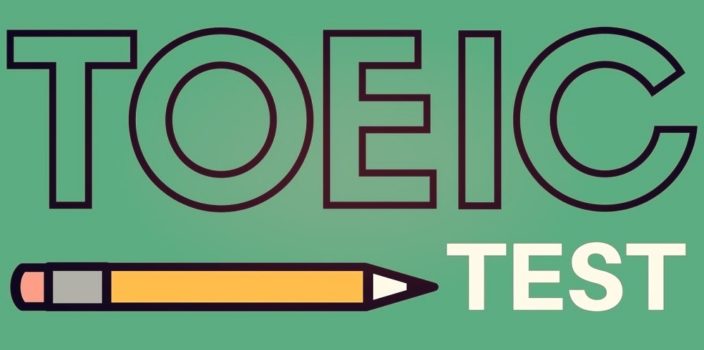
The Optimal Practice Test Schedule
Research on learning consolidation suggests spacing practice tests appropriately rather than clustering them intensively. Taking three full tests in one weekend provides less benefit than spreading those tests across three weeks with study and skill-building activities between attempts. This spacing effect allows learned material to consolidate in long-term memory.
For 3-month preparation timelines, complete full practice tests every 7-10 days with targeted part-specific practice between tests. This frequency provides sufficient assessment opportunities while leaving time for addressing identified weaknesses. Students on 1-month intensive schedules might complete tests every 4-5 days, though daily full tests rarely prove beneficial as they allow insufficient time for mistake analysis and skill improvement.
Effective Practice Test Strategies
- Realistic Simulation: Complete full tests under authentic time pressure without breaks or assistance, building true test-taking stamina
- Thorough Review: Spend equal time reviewing mistakes as taking tests, learning from errors rather than simply accumulating scores
- Strategic Spacing: Allow days between full tests for skill development and mistake pattern correction rather than continuous testing
- Weakness Focus: Use diagnostic results to guide targeted practice on specific parts or question types needing improvement
- Progress Documentation: Maintain detailed score records revealing improvement trends and persistent problem areas over time
Counterproductive Practice Approaches
- Unrealistic Conditions: Taking untimed tests or allowing interruptions fails to prepare for actual examination pressure and pacing demands
- Score Obsession: Focusing exclusively on total scores without analyzing which questions you missed and why they were challenging
- Excessive Testing: Taking multiple full tests daily without time for review and skill development between attempts
- Memorization Traps: Repeating identical tests until memorizing answers rather than seeking new practice materials regularly
- Isolation Practice: Completing tests without discussing strategies, comparing approaches, or seeking guidance on persistent challenges
Common Practice Test Mistakes to Avoid
Even motivated students frequently sabotage their preparation through counterproductive practice test approaches. Understanding these prevalent mistakes helps you structure preparation effectively from the outset rather than discovering problems only after wasting weeks on ineffective methods.
Taking Tests Without Time Constraints
Perhaps the single most common mistake involves practicing without realistic time pressure. Many students complete practice tests allowing unlimited time, reasoning that they’ll eventually develop speed through repetition. This logic fails because time management represents a distinct skill requiring explicit practice under pressure. Untimed practice trains accuracy without pacing, leaving students unprepared for TOEIC’s strict time limits.
The TOEIC’s 75-minute reading section requires completing approximately one question every 45 seconds while maintaining accuracy. This pace feels unnaturally rushed for most learners initially. Only through repeated timed practice does this pacing internalize to the point where it feels manageable. Students who consistently practice untimed then face devastating surprises during actual examinations when they discover they cannot finish.
Neglecting Systematic Mistake Analysis
Another critical error involves completing practice tests, checking total scores, and immediately moving to the next test without thorough mistake analysis. This approach wastes the diagnostic value that practice tests provide. Simply accumulating test completions without learning from errors generates minimal improvement compared to strategic mistake review.
Effective mistake analysis requires examining not just which questions you missed but why you selected incorrect answers. Did you misunderstand vocabulary? Miss key information in listening passages? Fall for grammar traps? Run out of time and guess randomly? Each error type suggests different remediation strategies, and identifying patterns enables targeted improvement rather than generic “practice more” approaches.
- Using practice tests as learning tools rather than assessment instruments, looking up answers mid-test
- Repeating the same 2-3 practice tests multiple times until memorizing answers rather than understanding concepts
- Practicing exclusively on Parts you already excel at while avoiding challenging sections
- Taking practice tests sporadically without consistent schedule or sufficient total volume
- Ignoring listening practice by focusing exclusively on written reading sections
- Practicing in noisy, interrupted environments that don’t simulate actual test conditions
Insufficient Practice Volume
Some students mistakenly believe that 2-3 practice tests provide sufficient preparation. While better than no practice, this volume rarely generates optimal score improvement. Research suggests 5-10 full-length practice tests represent the minimum for significant gains, with 15-20 tests ideal for students targeting substantial improvements from modest starting points.
This volume requirement makes free resources, which typically offer 1-3 tests, insufficient as standalone preparation. Students must either supplement with paid platforms offering extensive test libraries or accept that their preparation remains incomplete. The comprehensive practice test guide provides detailed recommendations for optimal practice volume based on your current level and target score.
Creating Your Practice Test Schedule
Strategic scheduling transforms practice tests from occasional assessment events into systematic preparation components driving continuous improvement. Your practice test schedule should balance frequency, intensity, and sustainability based on your available time, preparation duration, and target score increase.
The 3-Month Balanced Schedule
Three months represents the optimal preparation duration for most students, balancing sufficient time for substantial improvement with maintaining high motivation levels. This timeline naturally divides into three distinct phases, each serving specific purposes within comprehensive preparation.
Month 1 – Diagnostic and Foundation (Weeks 1-4):
- Week 1: Take diagnostic full practice test, analyze results identifying three weakest parts
- Week 2-3: Daily 30-60 minute targeted practice on identified weak areas, no full tests
- Week 4: Second full practice test assessing initial improvement, adjust focus based on results
Month 2 – Intensive Practice (Weeks 5-8):
- Full practice test every 7-10 days (3-4 tests total this month)
- Daily 60-90 minute practice sessions between tests focusing on persistent weaknesses
- Begin timing pressure training, completing all practice under realistic time constraints
Month 3 – Refinement and Simulation (Weeks 9-12):
- Weekly full practice tests under perfect simulation conditions (4 tests total)
- Focus shifts to maintaining strengths while final optimization of remaining weak areas
- Final week includes one complete simulation exactly matching test day timing and conditions
The 1-Month Intensive Schedule
Students with imminent test dates require accelerated preparation compressing activities into shorter timeframes. While less ideal than longer preparation, strategic intensive scheduling still generates significant improvement for motivated learners.
- Week 1: Diagnostic test plus intensive review, begin daily 2-hour practice sessions
- Week 2: Two full practice tests mid-week and weekend, targeted weakness practice daily
- Week 3: Three full practice tests (Monday, Wednesday, Friday), review and targeted practice alternate days
- Week 4: Two final simulation tests early week, final 2-3 days light review and rest before official test
This intensive schedule requires exceptional commitment, dedicating 10-15 hours weekly to TOEIC preparation. Students with work, academic, or family commitments may struggle maintaining this intensity. Realistic self-assessment of available time prevents schedule abandonment when overambitious plans prove unsustainable.
Choose Your Perfect Red Swan Tutor Practice Plan
Red Swan Tutor offers four flexible subscription tiers accommodating different preparation timelines, intensity preferences, and budget considerations. All plans provide unlimited access to complete platform features including Casino full-test simulations, Park skill-building games, comprehensive analytics, and mobile compatibility. The distinction lies in recommended practice schedules and commitment duration matching various student needs.
3 Month Plan
€20/month
Focused Preparation
- Two 30-60 minute daily practice sessions
- 5 days weekly maintaining balance and sustainability
- Complete 1-2 full TOEIC tests weekly
- Perfect for students targeting 750-850 scores
- Balanced intensity preventing burnout while driving progress
1 Month Plan
€30/month
Intensive Preparation
- Two 60 minute daily practice sessions
- 6 days weekly for maximum exposure
- Complete 2-3 full tests weekly
- Ideal for imminent test dates requiring rapid improvement
- Demanding schedule for highly motivated learners
6 Month Plan
€15/month
Organized Preparation
- One 30-60 minute daily session
- 5 days weekly sustainable long-term
- Complete 1 full test weekly minimum
- Excellent for students with demanding schedules
- Gradual steady improvement reducing stress
12 Month Plan
€10/month
Regular Preparation
- One 30-60 minute daily session
- 5 days weekly consistent practice
- Complete 1 full test weekly
- Best for early starters planning ahead
- Most affordable extended access option
Strategic Platform Utilization
Maximum value extraction from Red Swan Tutor subscriptions requires strategic approaches beyond simply logging in occasionally. These proven utilization patterns help you optimize learning efficiency regardless of which subscription plan you’ve selected.
- Baseline Establishment Through Casino Testing: Begin every subscription by completing at least one full TOEIC simulation in the Casino environment. This diagnostic baseline precisely identifies which of the seven parts require the most attention, preventing wasted practice time on already-mastered content. Many students mistakenly practice their strongest areas while neglecting actual weaknesses.
- Targeted Skill Development in the Park: After Casino diagnostics reveal weak areas, transition to Park environments for focused remediation. If Part 5 Grammar challenges you, concentrate Park time on grammar exercises. If Part 7 Reading Comprehension proves difficult, emphasize reading practice activities. The Park’s gamified format makes targeted drilling engaging rather than tedious.
- Cyclical Casino Reassessment: Return to Casino for full test simulations every 7-10 days to assess improvement and identify any new problem areas emerging. This cyclical pattern of diagnostic testing, targeted practice, and retesting optimizes learning efficiency. The platform’s analytics automatically track trends, but manually reviewing your performance across multiple attempts provides additional insights.
- Daily Consistency Over Marathon Sessions: Thirty minutes daily proves more effective than 3.5 hours weekly compressed into one session. Distributed practice enhances memory consolidation and prevents cognitive fatigue that undermines learning. The platform’s mobile compatibility facilitates brief practice sessions during commutes, lunch breaks, or waiting times throughout daily routines.
Verified Score Improvement Statistics
Quantifiable outcome data distinguishes genuinely effective practice platforms from those making unsubstantiated claims. Red Swan Tutor maintains comprehensive performance analytics across its global user base, providing transparent insights into actual score improvements achieved by students following recommended practice schedules.
“I started using Red Swan Tutor at 580 after disappointing results on my first official TOEIC attempt. The diagnostic Casino test immediately showed me that Parts 3 and 7 were killing my score, but I hadn’t realized it because I was just looking at overall totals before. Three months of focused practice on those areas using the Park games, combined with weekly full tests in the Casino, brought me to 745. Finally qualified for my university’s exchange program. The gaming format honestly made it feel less like studying and more like actually wanting to log in every day.”
— Emma D., Business Student, Toulouse
- Average Improvement: 165 points across all proficiency levels completing 3-month recommended schedules
- Target Achievement: 87% of students reached their goal scores within planned preparation timelines
- Engagement Advantage: Users average 8.3 practice hours weekly versus 4.1 hours with traditional materials
- Completion Success: 91% of subscribers complete their chosen duration versus 62% industry average
- Satisfaction Rating: 4.8/5.0 across over 3,200 verified student reviews globally
- Score Distribution: 34% of users achieve 800+ scores, compared to 12% general TOEIC test-taker population
“Working full-time made traditional TOEIC courses impossible with their fixed schedules. Red Swan’s flexibility let me practice during my morning commute and lunch breaks. The immediate feedback was crucial since I couldn’t wait for weekly tutor sessions. Went from 620 to 815 in four months, which got me the promotion I’d been working toward. The progress analytics helped me stay motivated by showing concrete improvements even during plateau periods.”
— Thomas R., Marketing Manager, Paris
Comparative Effectiveness Analysis
Independent analysis comparing Red Swan Tutor outcomes against traditional preparation methods reveals significant advantages in both score improvement magnitude and student completion rates. The gamification strategy addresses the fundamental motivation challenge that causes most traditional preparation attempts to fail through abandonment rather than ineffective content.
Students using conventional textbooks and practice test PDFs demonstrate average improvements of 85-110 points when they complete planned preparation. However, completion rates hover around 60-65%, with many students abandoning preparation midway through due to motivation decay. By contrast, gamified platforms maintain 85-90% completion rates, and the students who complete their plans show larger improvements averaging 140-180 points.
The critical insight: engagement-focused design doesn’t just make preparation more pleasant, it fundamentally solves the consistency problem determining whether students accumulate sufficient practice volume for meaningful improvement. Superior content matters little if students don’t use it consistently.
Frequently Asked Questions About TOEIC Practice Tests
How many practice tests should I complete before taking the official TOEIC?
Research on test preparation effectiveness suggests completing minimum 5-7 full-length practice tests under realistic timed conditions before attempting the official TOEIC examination. Students targeting substantial score improvements (200+ points) often benefit from 10-15 practice tests over 2-3 month preparation periods. The specific number depends on your starting level, target score, and improvement rate during initial practice.
However, quantity alone doesn’t guarantee improvement. Five well-analyzed practice tests with thorough mistake review and targeted remediation between attempts yields better results than 15 tests completed without systematic analysis. The key lies in treating practice tests as diagnostic tools identifying weaknesses rather than merely accumulating completion statistics. Balance full test simulations with targeted part-specific practice addressing identified weak areas.
Red Swan Tutor’s unlimited practice model eliminates arbitrary limits, allowing students to complete as many tests as their preparation schedule requires without worrying about exhausting content libraries or incurring per-test fees common with other platforms.
Are free TOEIC practice tests accurate compared to the actual examination?
Free TOEIC practice test accuracy varies dramatically across platforms. Official ETS sample materials guarantee perfect accuracy since they contain actual retired test questions. However, most free third-party tests show significant quality variation ranging from reasonably authentic to completely unrealistic in difficulty, question style, or format.
The most reliable free options include ETS official samples, TOEIC Test Pro, and BestMyTest’s free tier. These platforms demonstrate sufficient quality control and content development expertise to produce practice materials resembling authentic TOEIC examinations. Conversely, many free tests found on random websites, particularly those created by individual teachers rather than professional test prep organizations, often feature questions that bear little resemblance to actual TOEIC content.
Evaluate any practice test by comparing question styles, vocabulary levels, and answer option patterns against official ETS materials. If practice test questions feel noticeably easier, harder, or stylistically different from official samples, their diagnostic value decreases substantially. Your practice test scores should correlate reasonably with your eventual official TOEIC score, typically within 50-75 points assuming realistic testing conditions.
Should I focus on free tests or invest in paid practice platforms?
The optimal strategy combines both free and paid resources strategically rather than choosing exclusively one category. Use free tests initially for format familiarization, diagnostic assessment, and determining whether substantial TOEIC preparation investment makes sense for your goals. If your initial free test score already meets or exceeds requirements, extensive paid preparation may prove unnecessary.
However, students targeting significant score improvements (100+ points) or needing high scores (750+) typically benefit substantially from paid platform investments. The comprehensive test libraries, detailed analytics, and quality answer explanations justify costs through improved learning efficiency and higher ultimate scores. Three months of Red Swan Tutor subscription (€60 total) costs less than one private tutoring session yet provides unlimited practice access and sophisticated progress tracking.
Calculate the value proposition personally: if a 150-point score increase enables university admission, scholarship qualification, or job promotion, investing €30-100 in quality preparation represents exceptional return on investment. Conversely, if TOEIC serves as general English assessment without specific score requirements, free resources may suffice for casual preparation goals.
Many successful students use free tests during initial diagnostic phases and again as final supplementary practice after exhausting paid platform content, with the bulk of intensive preparation occurring on comprehensive paid platforms offering superior learning support.
How often should I take full-length practice tests during preparation?
Optimal practice test frequency balances regular assessment needs against allowing sufficient time for mistake analysis and skill development between tests. Taking full practice tests every 7-10 days represents the sweet spot for most students following 2-3 month preparation timelines. This schedule provides approximately weekly diagnostic checkpoints while leaving 6-9 days for targeted practice addressing identified weaknesses.
More frequent testing (every 3-4 days) rarely improves outcomes since insufficient time exists between tests for meaningful skill development. Students simply demonstrate their current ability repeatedly without the intervening practice needed for improvement. Conversely, testing too infrequently (every 2-3 weeks) reduces diagnostic opportunities and makes it harder to monitor whether practice activities actually generate improvement.
Shorter 1-month intensive preparation schedules might justify slightly more frequent testing (every 4-5 days), though this remains suboptimal compared to longer preparation allowing proper spacing. Extended 6-month timelines can stretch to 10-14 days between full tests, dedicating more time to foundational skill building before frequent assessment.
The key principle: treat practice tests as diagnostic tools assessing your current ability and identifying weaknesses, not as primary learning activities themselves. The actual learning occurs during targeted practice between tests addressing identified problem areas. This diagnostic-practice-reassess cycle, when properly balanced, optimizes preparation efficiency.
Can I improve my TOEIC score using only practice tests without additional study?
Practice tests alone can generate meaningful score improvements, though typically less than combined approaches integrating practice with targeted skill development. Students taking multiple practice tests without supplementary study average 60-90 point improvements over 2-3 months, primarily through increased format familiarity, improved time management, and reduced test anxiety. These gains prove significant for students starting near target scores requiring modest improvements.
However, practice-only approaches encounter limitations. If vocabulary gaps, grammar weaknesses, or fundamental listening comprehension challenges underlie low scores, simply repeating practice tests without addressing these foundational issues yields diminishing returns. After initial format familiarization benefits plateau, further practice without skill remediation generates minimal additional improvement.
The most effective preparation combines regular practice tests for assessment and familiarity with targeted activities building specific skills between tests. When practice tests reveal Part 5 grammar as a weakness, dedicate time to systematic grammar study. If Part 3 listening comprehension challenges you, engage in extensive listening practice beyond just taking tests. This integrated approach addressing both test-taking skills and underlying competencies generates optimal score improvements.
Red Swan Tutor’s dual environment explicitly supports this integrated approach. The Casino provides the assessment function through full tests, while the Park offers targeted skill-building activities addressing weaknesses identified through testing. This architecture guides students toward balanced preparation rather than excessive testing or pure skill work without assessment.
What’s the difference between TOEIC practice tests and the official examination?
High-quality practice tests should closely mirror official TOEIC examinations in format, difficulty, question styles, and timing. However, several subtle differences typically exist even with excellent practice materials. Official tests undergo rigorous psychometric analysis ensuring precise difficulty calibration and score consistency across all test administrations. Third-party practice tests, even quality ones, cannot match this statistical rigor since they lack access to large-scale test-taker data.
Audio quality sometimes differs between practice and official tests. While premium platforms invest in professional recordings, official TOEIC audio represents the gold standard in clarity, accent variety, and natural speech patterns. The official test environment itself, including specific testing center conditions, proctoring presence, and heightened anxiety, differs from home practice regardless of how carefully you simulate conditions.
Despite these differences, quality practice materials provide invaluable preparation. The goal isn’t perfect replication but sufficient similarity that skills developed through practice transfer effectively to the official examination. Students completing extensive quality practice consistently perform better on official tests than equally proficient English speakers lacking such preparation, regardless of small differences between practice and authentic materials.
Prioritize official ETS materials when available for the most authentic experience, but don’t let perfect become the enemy of good. Quality third-party practice tests from reputable platforms like Red Swan Tutor, TOEIC Test Pro, or BestMyTest provide excellent preparation despite not being 100% identical to official examinations. The 90-95% similarity these platforms achieve suffices for developing necessary skills and strategies.
Start Your Practice Test Journey Today
Effective TOEIC preparation demands strategic practice test utilization combining quality materials, realistic simulation conditions, systematic mistake analysis, and sufficient volume for meaningful improvement. Whether you begin with free resources for initial exploration or invest immediately in comprehensive paid platforms, consistent practice under authentic time pressure remains non-negotiable for score optimization.
The practice test landscape offers options spanning free samplers to premium platforms with sophisticated analytics. Your optimal choice depends on current level, target score, available budget, and personal learning preferences. Students satisfied with modest improvements or already near target scores may succeed with free resources supplemented by general English study. Those targeting substantial gains or high scores typically benefit from paid platform investments providing comprehensive support.
Red Swan Tutor distinguishes itself through gamification psychology addressing the fundamental motivation challenge undermining most preparation attempts. The Casino and Park dual environment combines diagnostic assessment with engaging skill development, while affordable €10-30 monthly subscriptions democratize access to premium features. The platform’s proven track record of 165-point average improvements among students completing recommended schedules demonstrates effectiveness across proficiency levels.
Regardless which platforms you select, remember that practice test quantity matters less than quality of engagement with each test. Five thoroughly analyzed tests with systematic mistake review and targeted remediation generate superior outcomes compared to 20 tests completed without analysis. Treat practice tests as diagnostic tools guiding your preparation rather than endpoints themselves. Learn more about required TOEIC scores for your specific goals to ensure your practice targets appropriate levels.
Questions About Practice Tests?
Contact our support team at support@redswantutor.com
We’re here to guide your TOEIC preparation journey.
© 2025 Red Swan Tutor. All rights reserved. | Homepage | TOEIC Blog | About Us

